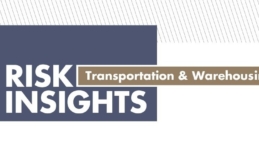Legislative Brief
ERISA Plans – Determining Plan Name, Number and Year
Employee welfare benefit plans (such as group health plans) are required to have their own identifying information, including a plan name, plan number and plan year. This information must be included on the plan’s Form 5500 (if applicable) so that the U.S. Department of Labor (DOL) can recognize the plan. It also must be included in the plan’s summary plan description (SPD) so that participants can identify their benefit plan and understand how it operates.
Employers that are completing the Form 5500 or preparing an SPD may have questions about how to identify their employee welfare benefit plans. This Legislative Brief provides tips on how employers can determine the plan name, plan number and plan year for their employee benefit plans.
Plan Name
A welfare benefit plan’s name must be included on the Form 5500 and in the SPD. In addition, if the plan is commonly known by a different name to its participants, that different name must also be included in the SPD.
Picking a Plan Name: There are no specific legal requirements for determining a welfare benefit plan’s name. To help identify the plan, the plan’s name typically includes both the plan sponsor’s name and a general description of the benefits provided by the plan. For example, a group dental plan maintained by ABC Company may be called the “ABC Company Dental Plan.”
Plan Number
Employers may decide to bundle (or “wrap”) different types of welfare benefits under one ERISA plan. For example, an employer that offers group health, dental and vision benefits may decide to bundle all of these benefits under one plan. In this case, the bundled plan’s name (for example, ABC Company Health and Welfare Plan) should be the official plan name used on the Form 5500 and in plan documents.
Unlike the plan name, the DOL has specific rules about selecting a plan number for an employee welfare benefit plan. The plan number is a three-digit number that is assigned to the plan by the plan administrator or plan sponsor. This three-digit plan number, in conjunction with the employer’s nine-digit employer identification number (or EIN), creates a unique 12-digit number that is used by the DOL to identify the plan.
As explained in the Instructions to the Form 5500, an employer’s welfare benefit plans should be numbered consecutively starting with 501. Once a plan number is assigned, it should always be used in connection with that plan and should not be used for any other plan.
For example, if an employer sponsors one welfare benefit plan (for example, a group health plan), its plan number would be 501. If this employer later adopts another plan (for example, a group dental plan), its plan number would be 502.
In general, if a welfare benefit plan is terminated, its number should not be used for a different or new plan maintained by the same employer. The new plan should be assigned the next available number that has not been used (for example, 502). Making design changes to a plan (including changing insurance carriers) is generally not a plan termination that would result in a new plan (or new plan number).
Also, if an employer has a bundled plan (for example, a welfare benefit plan that includes health, dental and vision benefits), the plan should have only one plan number assigned to it. All the benefit programs provided under the bundled plan would share the same plan number.
Plan Year
Section 3(39) of the Employee Retirement Income Security Act (ERISA) defines “plan year” as the calendar, policy or fiscal year on which the records of the plan are kept. Although short plan years are allowed in some limited situations, a plan year is generally the 12-month period that was established when the welfare benefit plan became effective.
Many employers operate their welfare benefit plans on a calendar year basis, from Jan. 1 through Dec. 31 of each year. Other employers operate their plans on a non-calendar year basis, which may be consistent with the company’s taxable year or with an insured plan’s policy year.
To determine a welfare benefit plan’s plan year, an employer should first review the documents governing the plan. ERISA requires that the plan’s SPD specify the plan year. Also, for a plan that files a Form 5500, the plan year must be disclosed on the form. If the plan document or Form 5500 does not designate a plan year (or if there is no plan document or Form 5500) federal regulations issued under HIPAA (and amended pursuant to the ACA) provide guidance on determining the plan year:
- The plan year is the deductible or limit year used under the plan;
- If the plan does not impose deductibles or limits on a yearly basis, the plan year is the policy year;
- If the plan does not impose deductibles or limits on a yearly basis, and either the plan is not insured or the insurance policy is not renewed on an annual basis, the plan year is the employer’s taxable year; or
- In any other case, the plan year is the calendar year.
Thus, if an insured plan is not required to file a Form 5500 and does not have an SPD, the plan year will generally be the policy year, presuming that the plan is administered based on that policy year. However, if the plan’s deductible is administered on a basis other than the policy year (for example, the calendar year), the plan year will be the year used for administering the deductible.
In addition, all of the benefit programs under a bundled plan must have the same plan year. However, to the extent that more than one benefit program is provided through an insurance contract, the contracts may have varying policy years or renewal dates.









